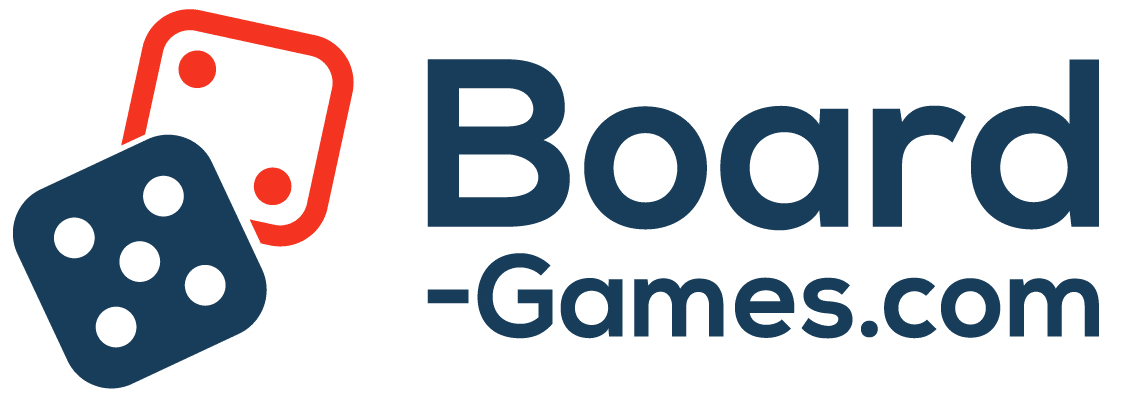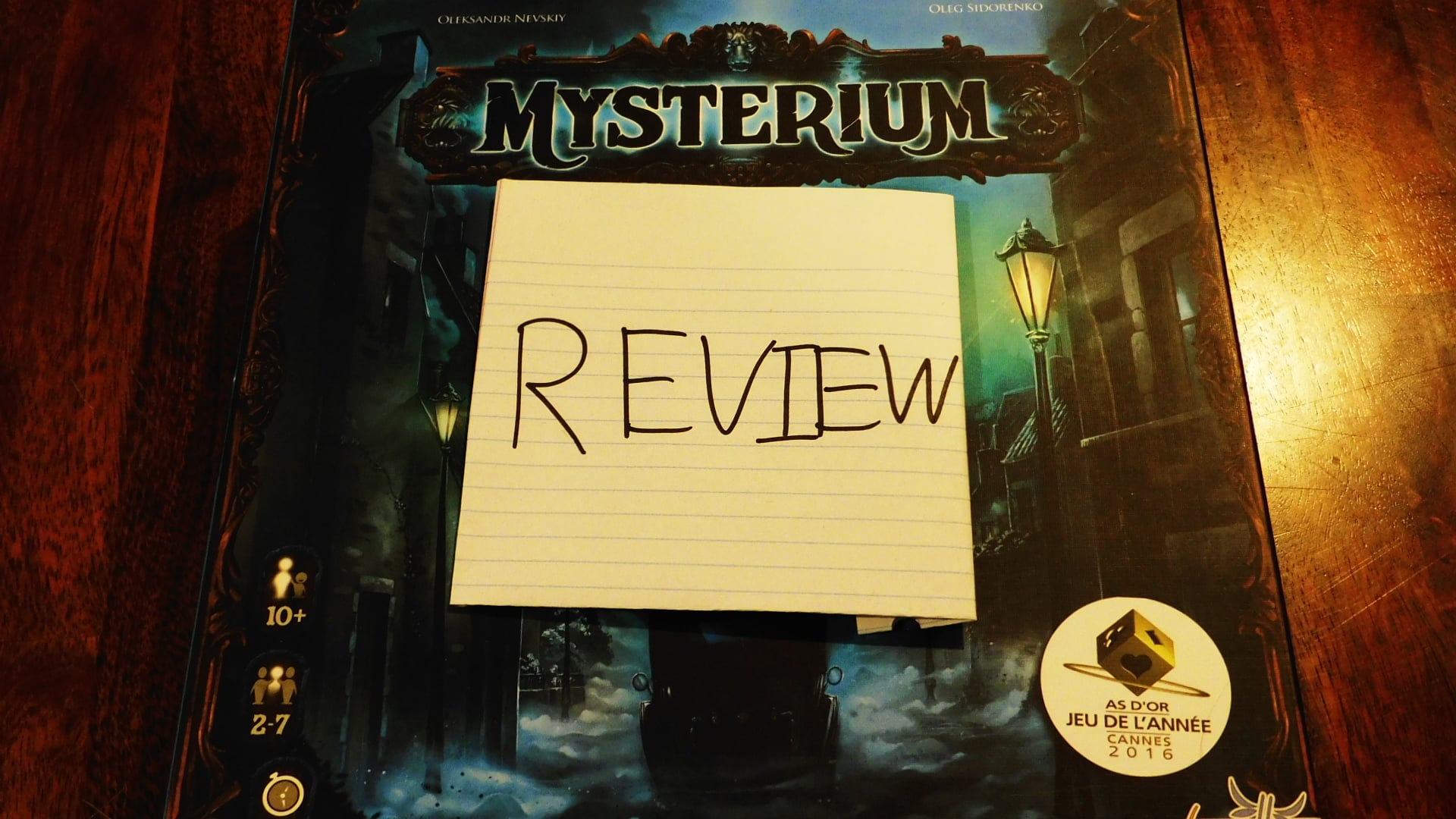Plenty of spooky-themed games exist in the board gaming world. Among these are horror essentials such as Arkham Horror, Mansions Of Madness, and more. Still, there’s always room for additional greats. Mysterium might be one, but does my Mysterium review put it among them?
Mysterium deserves to be in your board game collection because it’s easy to teach and play, has a great spooky theme, builds a creepy atmosphere, and has lots of replayability. It’s great for playing around the holidays or in the evenings, and it’ll have people laughing and asking to play it again.
Table of Contents
Mysterium Overview
One of Mysterium’s better aspects is that it comes with a lot of content but not a lot of complexity. You’ll see more below, but just know that understanding this game is pretty easy. To begin, let’s take a look at the back-of-the-box facts.
Back-Of-The-Box Facts About Mysterium
- Player Count: 2-7
- Time To Play: 45 minutes to 1 hour and 30 minutes
- Age Range: 10 and up
- Difficulty: Beginner/Easy
- Price Range: $40-$50
- Release Year: 2015
- Publisher(s): Libellud
- Designer(s): Oleksandr Nevskiy and Oleg Sidorenko
- Artist(s): Igor Burlakov, Oleksandr Nevskiy, Oleg Sidorenko, and Xavier Collette
- Where to Buy: Amazon
What Comes In The Box?
Mysterium comes with the following components:
- Six Intuition Tokens
- Six Sleeves
- Six Clairvoyancy Level Markers
- 36 Clairvoyancy Tokens
- One Clock Board
- One Timer
- Four Progress Boards
- One Character Progress Board
- One Location Progress Board
- One Object Progress Board
- and One Epilogue Progress Board
- 54 Psychic Cards
- 18 Character Psychic Cards
- 18 Location Psychic Cards
- and 18 Object Psychic Cards
- 54 Ghost Cards
- 18 Character Ghost Cards
- 18 Location Ghost Cards
- and 18 Ghost Object Cards
- Six Culprit Tokens
- Three Crow Markers
- One Game Screen
- Six Ghost Tokens
- 84 Vision Cards
Theme
Mysterium’s theme is appropriately eerie. It sees two to seven Psychic gathering in a mansion to solve the Ghost’s murder. The Ghost gives those Psychics Visions they have to interpret. Through their interpretations, they will slowly uncover where the Ghost was murdered, by who, and with what.
By the way, if this is sounding similar to Clue at all, that’s another part of Mysterium’s charm. In fact, I’ll go ahead and say it now: if you like Clue, you’ll like Mysterium.
How To Play Mysterium
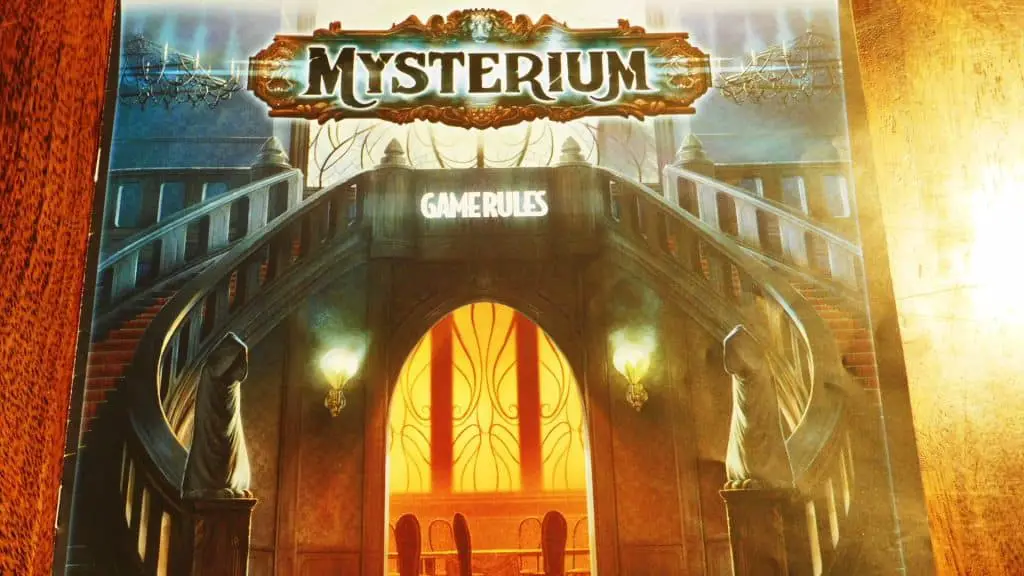
Please know this How To Play will not cover setup or other elements in-depth. This How To Play is only intended to give you a quick overview of how the game plays before diving into the review of Mysterium. For a much more detailed look, I recommend either my How To Play Mysterium or Mysterium Playthrough pieces.
With that said, here’s how to play Mysterium, starting with setup.
Setup
Mysterium’s setup is simple. Shuffle each deck of cards separately, create the line-up for the Suspects, Locations, and Objects, give players their components, and get the Ghost player set up as well with their Ghost Cards and Vision Cards. Players will also need to choose a level of difficulty for the game, with options including Easy, Medium, and Hard.
What To Do Each Turn In Phase 1
In Phase 1 of Mysterium, there are seven rounds. Behind a screen, the Ghost has a Suspect, Location, and Object assigned to each Psychic. The Ghost’s goal is to give each player Vision Cards that lead them to guess their Suspect, Location, and Object.
Giving Out Visions
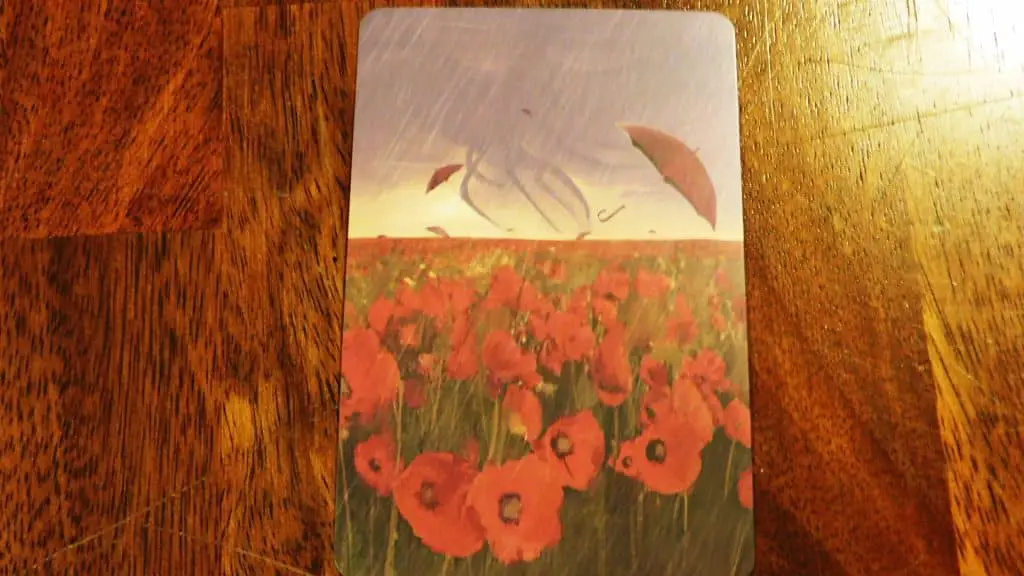
Each turn begins with the Ghost performing this very task. They give each player, one at a time and facedown, as many Vision Cards as they so choose between one and seven. After giving the Psychic some amount of Vision Cards, the Ghost draws back up to seven cards, then repeats this process until every Psychic has at least one Vision Card in front of them.
Interpreting Those Visions
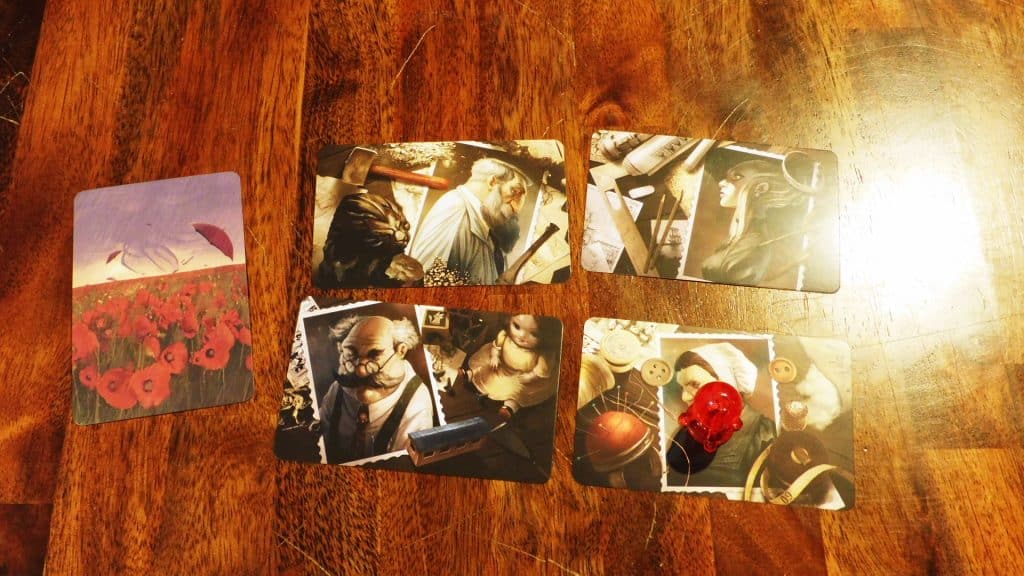
Next, the Ghost flips over the timer (oh yeah, this game has a timer!). Before time runs out, each Psychic must place their Intuition Token (the little colored crystal balls) on their guess for that round. To make their guess, they study the Vision Card or Vision Cards the Ghost gave them. Something on the card is intended to be a clue as to what Suspect, Location, or Object they should guess. For example, maybe the color red features prominently on the Vision Card. Maybe that means the Ghost wants them to guess the Suspect with a red scarf. Or maybe the card has a knife on it, so perhaps the Ghost wants them to guess the Suspect with a chef’s hat.
It’s up to the Psychics to interpret what they think the Ghost is trying to tell them, and they can talk and help each other to make the right call. During this time, the Ghost player can say or hint at nothing. They can listen and observe to gather information about how players are interpreting the Vision Cards they give them.
Finding Out The Truth
After all, players have made their guesses and the timer has run out, the Ghost lets players know if they’re right or wrong. There are a variety of ways the Ghost can do this, but the easiest way is to just tell each player, one at a time, if they guessed right or wrong.
All Psychics start by guessing Suspects. If they get it right, next round, they guess Locations. And if they get it wrong, the next round, they have to guess their Suspect again.
If all players guess their Suspect, Location, and Object correctly before the seven rounds are up, then they reach Phase 2. If not, everyone loses.
Phase 2
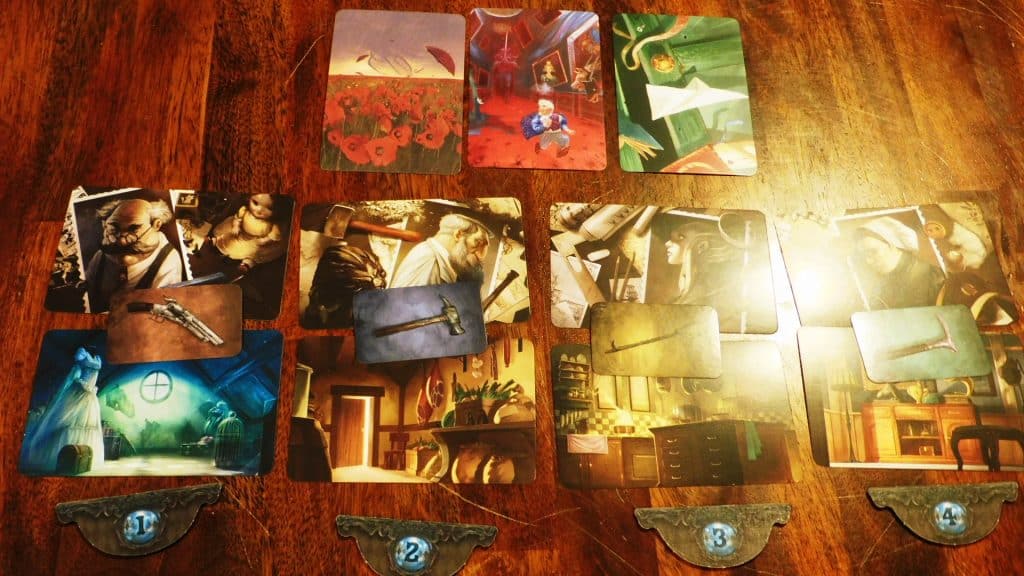
As each Psychic guesses the correct Suspect, Location, and Object, they place those cards in a sleeve they got at the beginning of the game. For Phase 2, each Psychic lays those cards out in front of themselves so each group is kept separate from the other. They take the Ghost Tokens, which have numbers on them, and place them below the cards. This way, it’s easy to tell which group belongs to which number.
Then the Ghost selects one of the numbered Culprit Tokens secretly. This determines which numbered group they’re going to guide the players to. The Ghost then selects three Vision Cards from their hand, one for the Suspect, one for the Location, and one for the Object. They lay these cards face down where all players can see them.
The Psychics vote on which numbered group they think solves the Ghost’s murder mystery. However, depending on certain parts of Phase 1 (which will be discussed more in How To Play), they may only get to see one of the three Vision Cards, two, or even all three.
Weirdly, the Psychics also can’t discuss beforehand what they think the best choice is, although you could easily discard this rule.
The Psychics flip over their votes together. The group with the most votes must match what the number the Ghost chose on the Culprit Token. If it does, everyone wins! If not, the Psychics have to wait another year to try and solve the mystery again.
Now, it’s time for my Mysterium review.
Mysterium Review
It’s clear Mysterium’s developers carefully considered how each of its individual parts tied into the whole. Each piece of art, component, and gameplay element adds to the overall experience, but to truly appreciate why, it’s best to analyze them individually and then as a whole.
To begin my Mysterium review, here’s my take on the art.
Art
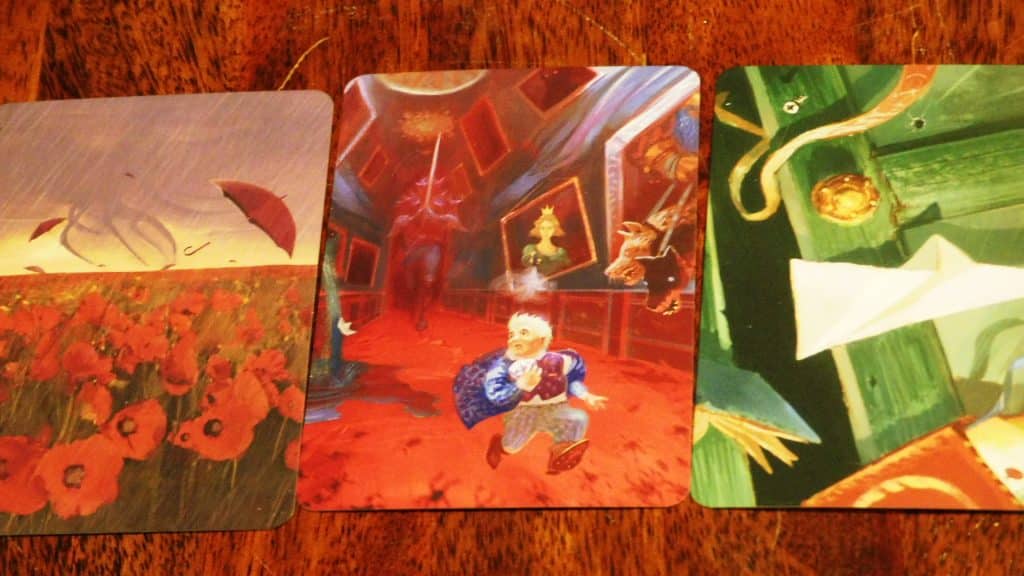
Aside from its spooky theme, the art in Mysterium is one of its main selling points. The art is painterly, surreal, weird, dreamlike, and eerie. Between turns, you’ll often find yourself just studying it.
Plus, the art does a great job of allowing for a multitude of different interpretations. Without this aspect, Mysterium would be too easy. Thankfully, many cards come with multiple colors and elements to increase the challenge without making it impossible.
Components
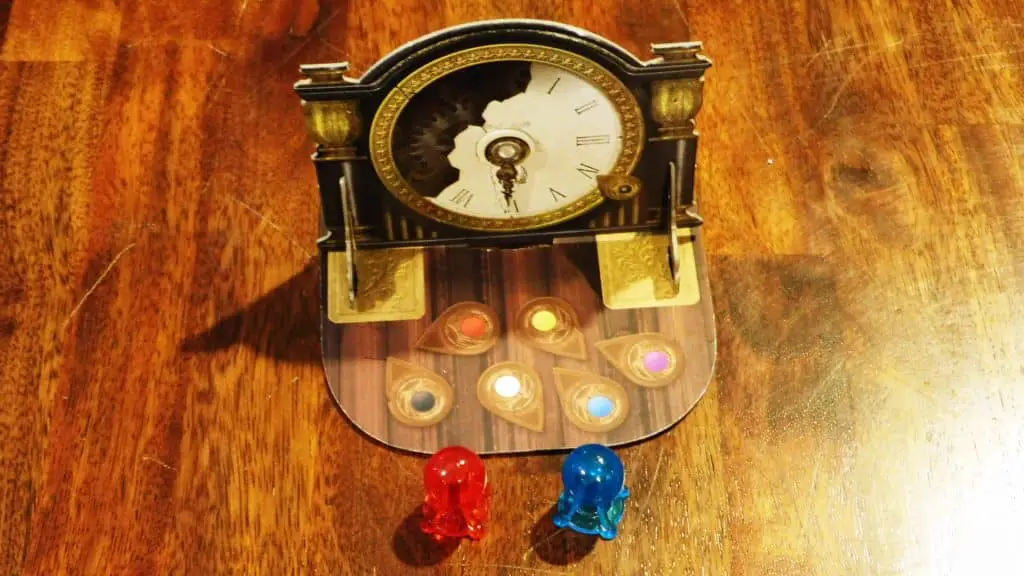
As a big fan of games with unique, theme-appropriate components, I love Mysterium’s Player Pawns. The game refers to these as Intuition Tokens, and they’re shaped like crystal balls. Each one is a different color that matches the player’s chosen color, and they’re made of plastic.
Adding to this high level of quality and unique production, Mysterium also provides a Clock Board. This is a 3D clock that counts from I to VII, indicating how many turns are left in the game. It’s a wonderful element that adds to the overall atmosphere of the game.
The rest of the components are great, too, with the cards having a nice feel and everything being easy to interpret and understand.
Theme
I enjoy Mysterium’s theme. Creepy mansions, as well as murder mysteries, have always piqued my interest. Having the Ghost participate in solving their own murder is also a great twist that also adds to the spookiness of the game. I know that’s been done before, but it’s a great choice by the developers here.
Plus, the theme really comes through in Mysterium! The components, the art, all of it creates the kind of atmosphere you’d hope for in a game like this.
Gameplay
Several aspects of Mysterium’s gameplay stand out to me. One is how there’s little luck. Yes, it’s possible for the Ghost to get Vision Cards that’ll be harder for the Psychics to interpret correctly, but the game provides the Ghost with multiple ways to mitigate this. Plus, the Psychics can help each other, and as Psychics guess correctly, it gets easier for the other Psychics to guess correctly as well.
The three levels of difficulty also allow players to play the game at a level that makes sense for them. Plus, boiled down, Mysterium is no more than giving players cards, studying those cards, and making educated guesses based on those cards and who gave out those cards. That’s it, and it’s simple and fun.
Replayability
Mysterium is as replayable as you want it to be. The base game is packed with enough Psychic Cards and Vision Cards for players to play one game right after the other, and both will feel fresh. With that said, there is a limit to Mysterium’s replayability, and I find it best as a seasonal or annual game, something you break out every so often when the mood is right. You can also switch up who’s playing the Ghost, which changes how players have to interpret the cards the Ghost is giving them.
In addition, if you find the base game becoming stale, Mysterium also has two expansions: Hidden Signs and Secrets & Lies. Both come with additional Vision Cards for the Ghost to use. Hidden Signs comes with more Suspects, Locations, and Objects to change up the overall mystery, and Secrets & Lies adds a whole new set of cards called Story Cards. Story Cards replace Object Cards and elevate Mysterium’s challenge as the Ghost has to give players Vision Cards that lead them to the right Story as opposed to an Object.
Lastly, because Libellud made Mysterium in addition to similar games such as Dixit and Detective Club, you can mix cards from the different games together for even more variety! To do this, you’ll need to get some card sleeves with backs that can’t be seen through, but once you’ve done that and sleeved the cards, you’re set up for a new experience.
Mysterium: My Rating
As always, I rate games on a Don’t Buy, Wait For A Sale, or Buy scale. For me, Mysterium is a Buy. As of May 2023, this is my favorite Halloween game. This puts it above other favorites such as Mansions Of Madness 2nd Edition and Lovecraft Letter but with good reason.
Mysterium is easy to teach and play. Although interpreting the Vision Cards correctly is difficult at first, guessing wrong is part of the fun. Plus, the game provides ways to mitigate the chances of guessing wrong since players have over twice as many rounds as needed correct guesses. That’s not to mention all the players (except the Ghost) can help each other make decisions too.
As I’ve been mentioning throughout this piece, Mysterium also has a great vibe. The production, the card art, the theme, all of it comes together for a wonderfully spooky experience, and you can play it again and again too.
The only aspect of Mysterium I don’t like is Phase 2. This phase feels tacked on, and it’s not a great feeling “beating” Phase 1 only to have it all come crumbling down in Phase 2. I’m confident there are variants that adjust this phase or maybe even remove it entirely, but even if Phase 2 doesn’t go well, it’s not enough to even come close to ruining the great experience Mysterium provides.
In short, I love Mysterium, and I’m confident you will too.
Did You Know?
(Each time you refresh the page you will get a new “Did You Know” fact!)
Did you know unboxing board games can be really enjoyable to some people? Me included! Check out my thoughts here!
Conclusion: Mysterium Review
Mysterium is a game well worth your money, especially if you’re searching for a game that’d be great to play around Halloween. Even if you choose to play it at other times of the year, it’s a fun party game that provides players with memorable experiences and an enjoyable way to come together with friends and family.
Now that I’ve had my say in my Mysterium review, what do you think about Mysterium? Are you ready to solve a creepy murder mystery? Or are you going to hold off? Let me know what you think and why in the comments below!
And, as always, keep on gaming, fellow board gamers.
